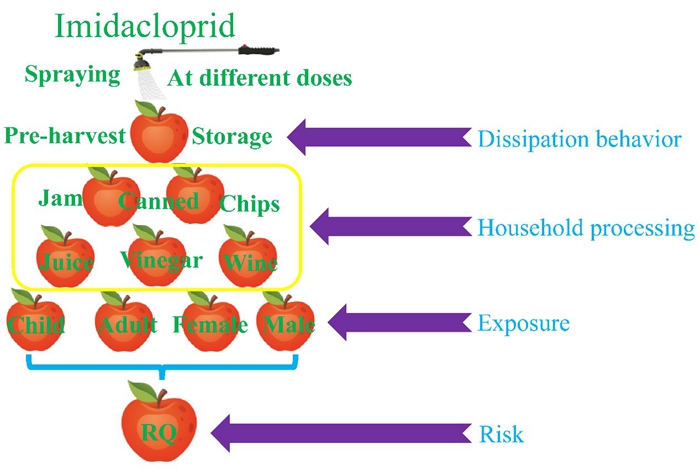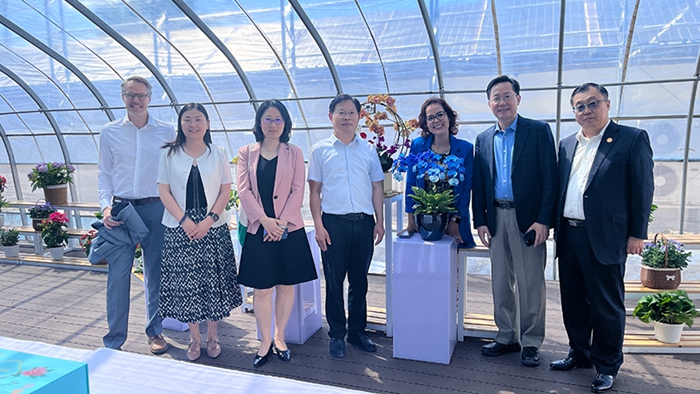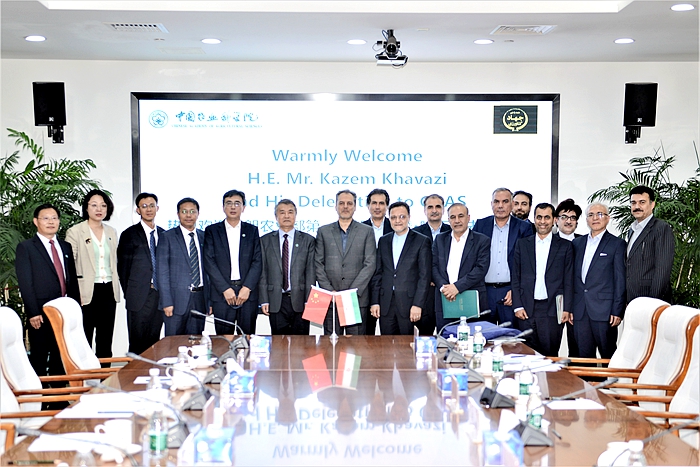Dissipation behavior and risk assessment of imidacloprid and its metabolites in apple from field to products
There is a saying that “an apple a day keeps the doctor away”. For the past few years, China is the largest producer of apples, accounting for one-third of the world’s total. At present, the application of chemical pesticides is an important mean and measure to prevent and control diseases and pests in apple. However, the extensive application of chemical pesticides posed potential risks to apple quality and safety. Meanwhile, the Environmental Working Group (EWG), which is a nonprofit and nonpartisan environmental organization, had listed apples in its “Dirty Dozen” list for several years. In addition, apples were often processed into vinegar, wines, juices, ciders, beverages and other food products of great commercial value. Some studies have found that pesticides were detected in apple and its processed products. Hence, the quality and safety of apple and its processed products had attracted more and more attention. Imidacloprid was widely used in agricultural production, and imidacloprid and its metabolites were often detected in fruits. Consumers may ingest imidacloprid and its metabolites through the consumption of apples or its processed products, which may pose a threat to human health.
In this study, the dissipation behavior, metabolism, household processing and risk assessment of imidacloprid and its metabolites in apple was investigated from filed to products. The residues of imidacloprid and its metabolites were extracted by using a modified-QuEChERS method and then identified and quantified by using HPLC-MS/MS. Field experiment results suggested that the half-lives of imidacloprid at 5 times the recommended dosage was 1.5 times that of the standard dosage. And the final residues of imidacloprid were less than the established maximum residue limits (MRLs). During the storage, higher levels of imidacloprid have longer half-live. This may be caused by reducing biological activity in apple storage. The concentrations of imidacloprid and its metabolites were significantly lower after household processing to various products in apple. The calculated processing factors were lower than 1 for imidacloprid and its metabolites, implying that the residual ratios of imidacloprid and its metabolites in each step of the food processing were reduced. The risk quotients were <1 for all Chinese people, indicating that acceptable risks associated with dietary exposure to imidacloprid in apple. However, the higher risks were observed in young people than adults, and females faced higher risks than males. Given high residue levels in pomace, imidacloprid and its metabolites should be further studied in commercial byproducts. In summary, the present study illustrated the dissipation behavior of imidacloprid and its metabolites in apples from field to various products and storage processes, and the results had important practical significance for guiding the application of imidacloprid and ensuring food safety and biological health. The results have been published in the Chemosphere (IF: 8.8).
This study was finished by Prof. Hanzhong Xie’s lab from Zhengzhou Fruit Research Institute, CAAS. The first author and corresponding author are Dr. Fajun Tian and Prof. Hanzhong Xie, respectively. This work was supported by the National Natural Science Foundation of China (32202347), Central Public-interest Scientific Institution Basal Research Fund (No.1610192023106), the Agricultural Science and Technology Innovation Program (Grant CAAS-ASTIP-2019-ZFRI-09) and the quality and safety risk assessment for agro-products of China (Grant GJFP20220202).
The URL for this article should be:
https://www.sciencedirect.com/science/article/pii/S0045653524012025

By Tian Fajun
tianfajun@caas.cn
-
 Jun 18, 2024Visit by CGIAR Executive Director Ismahane Elouafi to the Institute of Vegetables and Flowers,CAAS
Jun 18, 2024Visit by CGIAR Executive Director Ismahane Elouafi to the Institute of Vegetables and Flowers,CAAS -
 May 29, 2024CAAS President Meets Deputy Director General of IAEA
May 29, 2024CAAS President Meets Deputy Director General of IAEA -
 May 29, 2024CAAS President Meets Chairman of the Understanding China Forum
May 29, 2024CAAS President Meets Chairman of the Understanding China Forum -
 May 29, 2024CAAS President Meets Greek Minister
May 29, 2024CAAS President Meets Greek Minister -
 May 29, 2024CAAS President Meets Iranian First Deputy Minister of Agriculture
May 29, 2024CAAS President Meets Iranian First Deputy Minister of Agriculture
